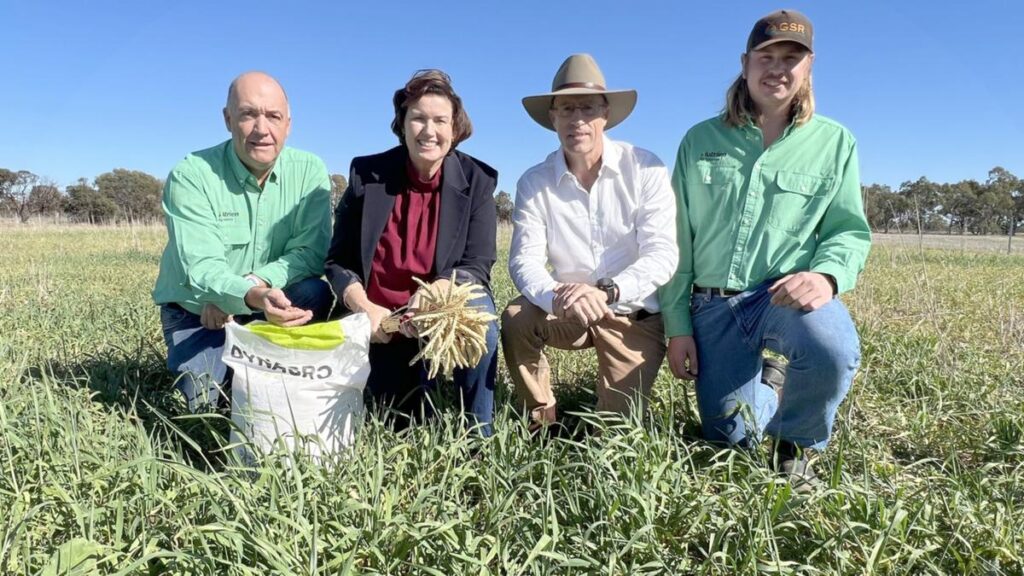Western Australian grain and livestock producers are set to reap the rewards of a new forage crop developed in the State’s south.
The new multipurpose triticale variety was designed for sheep and cattle producers across medium and low rainfall environments looking to maximise their stockfeed options on challenging soils.
Dyna-Trit 1143 was locally developed by the Department of Primary Industries and Regional Development in collaboration with international corporation, Florida Foundation Seed Producers.
Field trials were held during several seasons at Merredin, Wongan Hills, Manjimup and DPIRD’s Katanning Research Station.
The new variety does not have awns — the bristle-like growth in the triticale head — making it suitable for direct grazing, and silage or hay production.
It is also suitable for traditional grain harvest.
WA Agriculture Minister Jackie Jarvis said the State Government saw “great potential” for the “robust” variety, and triticale more generally.
“This initiative is part of our investment to help industry respond to a changing climate and deliver year-round feed options for sheep and cattle growers across WA’s diverse environments,” she said.
“Our government is committed to supporting research and development collaborations that deliver new innovations and farming systems that boost growers’ resilience and returns.”
The new forage crop is part of the State Government’s ongoing investments to increase the profitability and sustainability of WA’s livestock and grains industries, and will be marketed in Australia by Nutrien Ag Solutions.
WA Nutrien seed category manager and Seednet regional manager David Clegg said Dyna-Trit 1143 was available to buy through Nutrien and CRT stores.
“We are really pleased to be involved in commercialising the new crop, and triticale is grown more in other states but it has a great fit for WA as well,” he said.
“Triticale is underutilised in WA and we hope to see a bigger uptake. It’s about improving the feed base for our sheep and cattle industries.
“It does particularly well in acidic soil types but also as a good-quality, hay and grain option for growers.”

